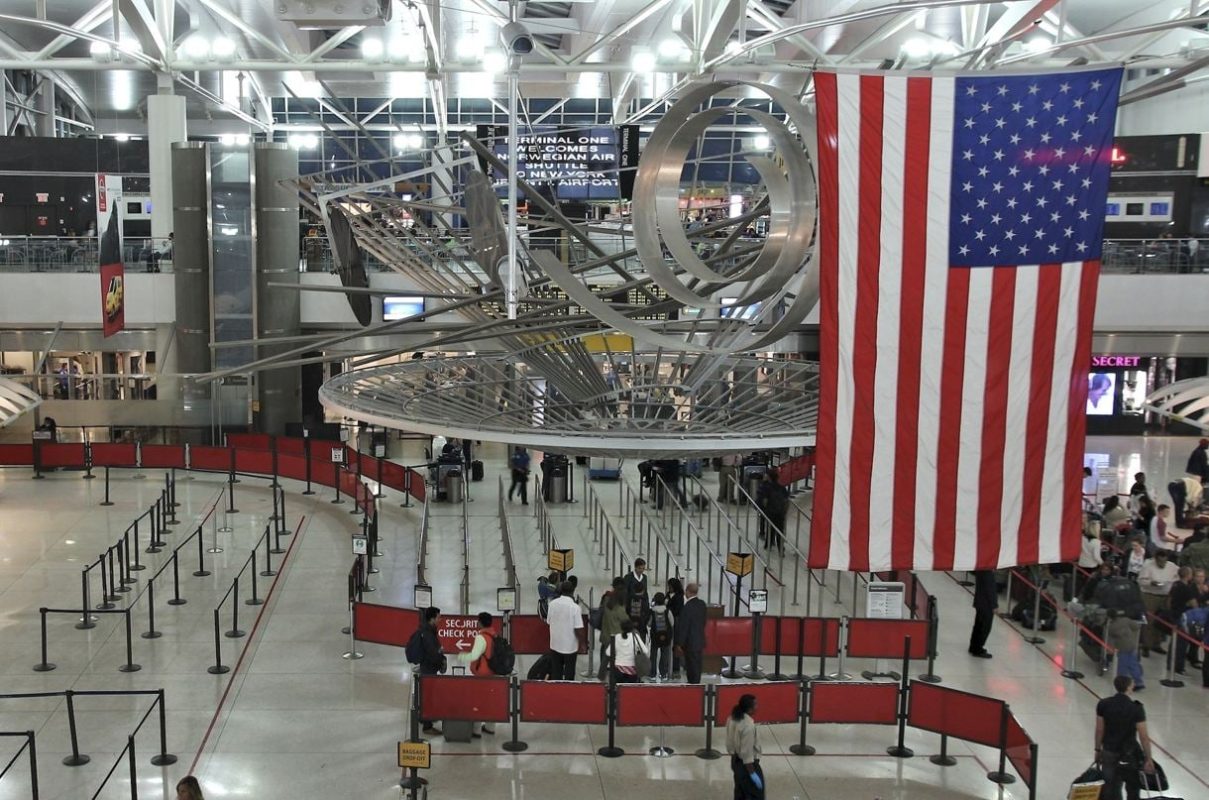Because the U.S. authorities prepares for what may very well be a major shift in its immigration and journey insurance policies, anticipation is mounting round the potential for a brand new journey ban, generally known as Journey Ban 5.0. This proposed journey restriction, set to potentially take effect around March 21, 2025, goals to focus on nations with poor vetting and screening processes for vacationers, elevating considerations about its far-reaching results on worldwide relations, the worldwide journey trade, and the people affected by the ban.


The proposal outlines a structured system for categorizing nations primarily based on their skill to fulfill U.S. safety requirements for traveler screening. On the coronary heart of this technique lies a “crimson checklist” of nations that may face a whole journey ban for his or her residents. In accordance with a draft proposal, the nations most likely to be affected by this ban include Cuba, Iran, Libya, North Korea, Somalia, Sudan, Syria, Venezuela, and Yemen, with Afghanistan being thought-about as a doable addition. These nations are recognized as having weak or non-compliant vetting and screening processes, inadequate safety measures for passport issuance, and an incapacity to share sufficient details about their vacationers with the U.S. authorities.


The proposed journey restrictions would probably result in a dramatic shift within the relationship between the U.S. and the affected nations. Diplomatic tensions may intensify, notably with nations already strained by previous political disagreements. As an example, nations like Iran, Cuba, and Venezuela may view the journey ban as a direct affront to their sovereignty and as a continuation of the adversarial stance taken by earlier U.S. administrations. Relations between the U.S. and these nations have traditionally been fraught, and the introduction of this new coverage may escalate these tensions even additional.
Here’s a potential break down of the journey ban, however may see important adjustments earlier than launch.
| Class | Nation | Potential Motive |
|---|---|---|
| Pink Checklist (Probably Banned) | Cuba, Iran, Libya, North Korea, Somalia, Sudan, Syria, Venezuela, Yemen, Afghanistan (potential) | Poor vetting and screening processes, failure to share traveler data, insufficient passport safety |
| Orange Checklist (Enhanced Vetting) | Pakistan | Poor vetting and screening processes |
| Yellow Checklist (Monitoring) | Nations with perceived deficiencies in vetting processes | To deal with deficiencies inside 60 days or threat being moved to Pink or Orange Checklist |


Then again, the creation of an “orange checklist” proposes a extra nuanced method for nations like Pakistan, which might not be banned outright however as an alternative topic to enhanced vetting procedures. This consists of extra rigorous checks on people touring to the U.S. from these nations. Pakistan, which has lengthy been a key companion in U.S. counterterrorism efforts, may discover itself caught between satisfying the brand new necessities and sustaining its position as a regional ally. Whereas this coverage could appear much less extreme than a full journey ban, it nonetheless raises considerations about elevated bureaucratic hurdles for vacationers, delays at immigration checkpoints, and the broader results on diplomatic relations.


Nations that fall into a 3rd class, the “yellow checklist,” are given 60 days to handle perceived deficiencies of their vetting processes earlier than going through the chance of being added to both the crimson or orange lists. This time-frame supplies nations a chance to convey their procedures in keeping with U.S. safety requirements or face much more restrictive measures. This method, whereas providing some flexibility, highlights the problem of guaranteeing that every one nations meet U.S. expectations for safety and traveler screening, a objective that could be troublesome to realize for nations with restricted sources or political instability.


The potential reimplementation of such a sweeping journey ban raises quite a lot of contentious points. Nationwide safety stays a central concern for proponents of the coverage, who argue that tighter vetting processes are needed to guard U.S. residents from the specter of terrorism and unlawful immigration. Supporters contend that the U.S. authorities has an obligation to make sure that all vacationers coming into the nation are adequately screened and that nations that fail to cooperate ought to face penalties.


Nevertheless, critics argue that such a ban may very well be unjust and discriminatory. Journey bans primarily based on nationality are inherently broad and punitive, probably barring people from coming into the U.S. who could pose no risk. The coverage may disproportionately impression harmless individuals, reminiscent of college students, enterprise professionals, or relations attempting to reunite with relations. It could probably result in an elevated sense of alienation amongst affected populations, making it more durable for them to interact with the U.S. on cultural, tutorial, or financial ranges.


Moreover, the broader implications of the ban for the worldwide journey trade can’t be ignored. Nations which might be positioned on the crimson or orange lists may expertise important financial penalties. Tourism, a significant trade in lots of the affected nations, may very well be dealt a extreme blow, with companies and employees dropping useful worldwide clientele. Moreover, industries reliant on journey for worldwide commerce or conferences could face operational disruptions and delays, resulting in financial losses.


By way of its impression on worldwide diplomacy, the potential for retaliatory measures can’t be missed. Nations affected by the ban would possibly impose their very own restrictions on U.S. vacationers, additional exacerbating tensions between the 2 sides. Moreover, an absence of transparency within the standards used to pick out nations for the crimson, orange, or yellow lists may result in accusations of bias and unfair therapy, undermining the credibility of U.S. overseas coverage on the world stage.


In conclusion, the potential implementation of Journey Ban 5.0 is ready to be a divisive coverage that would have important and lasting results on worldwide relations, the worldwide journey trade, and particular person lives. Because the proposal strikes ahead, it’s clear that the choice will immediate additional debate concerning the steadiness between nationwide safety and particular person rights. Whereas the U.S. authorities’s concern for the protection of its residents is comprehensible, the broader penalties of such a journey ban have to be rigorously thought-about to make sure that the coverage doesn’t disproportionately hurt harmless individuals or disrupt very important worldwide relationships. The approaching months can be essential in figuring out whether or not this new journey ban turns into a actuality and, if that’s the case, the way it will reshape the worldwide panorama of worldwide journey and diplomacy.
Prepared For Your Journey? Check The Latest Entry Requirements For Your Destination Here
↓ Elevate Your Journey↓
Sign Up Now For Travel Off Path Premium! No advertisements, VIP Content material, Private Journey Concierge, Big Financial savings, Each day Offers, Members Discussion board & Extra!


✈️Join Our Travel Off Path Community Forum: The place vacationers unite, ask questions, share experiences and even discover like-minded journey buddies!
SUBSCRIBE TO OUR LATEST POSTS
Enter your e mail handle to subscribe to Journey Off Path’s newest breaking journey information, straight to your inbox.
This text initially appeared on TravelOffPath.com
Opinions expressed listed below are the writer’s alone, not these of any financial institution, bank card issuer, lodge, airline, or different entity. This content material has not been reviewed, accepted or in any other case endorsed by any of the entities included throughout the publish.
